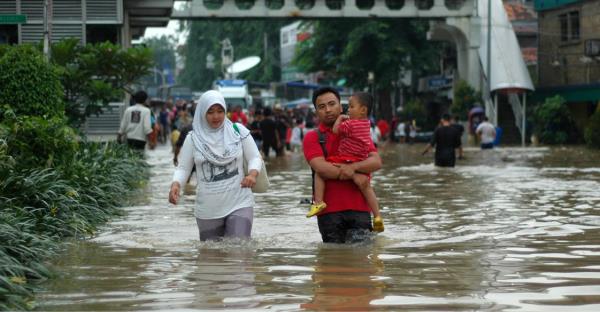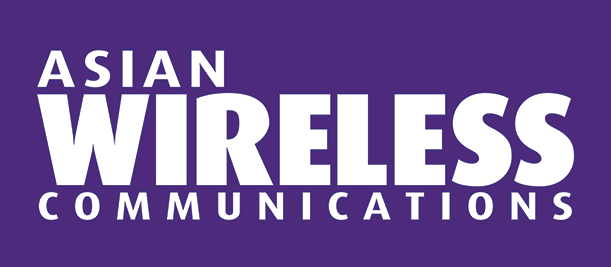19 June 2023


Rapid response in the wake of a disaster is the difference between life and death. Mission-critical communications underpins effective search and rescue response, says Winter Leng, ICT specialist and senior technical manager, Hytera
Southern Asia is prone to natural disasters which have caused overwhelming devastation in recent years. The 2004 Indian Ocean Tsunami, 2010 Pakistan and 2018 Kerala floods, 2015 Nepal earthquake, and recent Turkey earthquake are examples of these catastrophic events that have resulted in significant loss of life and extensive damage to infrastructure.
When disasters happen, immediate interventions are critical for PPDR agencies to support affected communities. The first step is to evaluate the situation and develop a response plan to coordinate resources promptly and effectively. The ‘golden 72 hours’ after a disaster are vital for search and rescue measures - dispatching personnel and equipment must be as fast as possible.
Real-time situational awareness is imperative to make informed decisions and share critical information among agencies, enabling incident leaders to plan and prepare for the unexpected by understanding dynamic emergencies promptly in ever-changing situations.
Communication is critical
Man-made and natural disasters alike have demonstrated, often through its failure, that the communications network is among the most essential components of critical infrastructure. Mission-critical communications play a vital role in making the world safer, and seamless connectivity is essential for responders to a moving threat regardless of place and time.
Delivering mission-critical communication, especially during a large-scale disaster, poses many challenges. A large-scale disaster, for example, requires the cooperation of multiple agencies and disciplines. However, the use of different communication technologies by agencies can hinder interoperability, making effective coordination the biggest challenge.
Meanwhile, although TETRA networks are typically hardened, the system is still prone to disruption in the event of infrastructure damage like transmission failure, power outages, and building collapse. Other problems also often arise, such as network congestion due to overuse by the panicked public, limited spectrum availability and interference, and road disruptions that make it difficult to reach the affected areas.
“To achieve these goals, we must develop a systematic methodology and leverage emerging technologies to connect, collect and compute data and create new applications (the ‘4Cs’) intelligently, accurately, and timely.”
While the digitalisation of two-way radio has been ongoing for decades, about 90% of radios in south Asia are obsolete analogues. According to research by Hytera and OMDIA, 80% of worldwide MCC active radios will be digital by 2025. Accelerating the transition to digital radio will overcome challenges and benefit responders with expanded capabilities, including optimal spectrum utilisation, decreased interference, better voice quality, wider-range coverage, and extended battery life with higher power efficiency.
Additionally, various information sources are becoming increasingly valuable and widely used, extending voice communication to assess the situation swiftly and accurately. These sources include CCTV footage, unmanned vehicles, satellite imagery, and various types of sensors (environmental, biometric, geophysical tracking and locations). However, managing the large volume of generated data can be daunting.
There is no one-size-fits-all solution to overcome these challenges. We need a comprehensive approach that involves advanced technologies, rigorous planning, and collaboration among all stakeholders.
Preparing for the worst
During response and recovery, mission-critical voice communication remains essential to first responders. The incorporation of real-time video (CCTV, satellite, airborne, carry-on cameras, etc.) and critical sensor data (environmental, biometric), combined with other data services (weather, social media, etc.), is playing an increasingly vital role in modernising public safety communication. By monitoring the situation in real-time and delivering critical information to incident leaders and first responders, they can quickly assess the situation and take appropriate action to minimise damage and protect lives.
To achieve these goals, we must develop a systematic methodology and leverage emerging technologies to connect, collect and compute data and create new applications (the ‘4Cs’) intelligently, accurately, and timely. This is commonly known as cyber-physical system (CPS) systems from the long-term perspective. Of the key pillars of the 4C mode - robust, reliable, and trustworthy connectivity - is an essential precondition for the other three.
With the advent of the hybrid network era, modernising mission-critical communications involves more than just digitising radio systems or broadbandisation. Instead, it can be considered as integrating a range of technologies, including analogue and digital radio, LTE/5G/MESH, IoT sensors, control room, and cloud, to enhance situational awareness and decision-making and ultimately improve efficiency, effectiveness, and safety. While this transformation journey may be long, it promises significant benefits and can be the difference between success and failure.
Professionals worldwide have been exploring emerging technologies and developing technical frameworks, open standards, and future-proof solutions to revolutionise smart firefighting and rescue services. Based on best practices and commercial use cases, we can do more to help address the current challenge and prepare for the future in ICT fields:

We can improve voice-centric PMR communications by integrating LTE and 5G networks, providing mission-critical push-to-talk over cellular (PTToC), and incorporating smart sensors such as wearable and biometric sensors to enhance situational awareness and responder safety.
The cloud can be an unexpected contributor to emergency services, reaching inhabitants on the front lines through social media and connecting digital volunteers when the primary communication infrastructure fails. Adding a comprehensive communication platform that converges vertical systems is key to achieving interoperable communication and information sharing among public safety organisations, enabling seamless collaboration, and overcoming information silos.
Identify cost-effective technologies to develop a tactical communication system, including local area network (LAN) and personal area network (PAN), that can function as a backup option when the primary network fails. This requires an advanced communication solution that combines various technologies including, but not limited to, manpack ad-hoc DMO repeater, MESH, and deployable LTE/5G. It can also leverage other emerging technologies like unmanned vehicles to ensure critical service continuity, helping bridge the digital gap during emergencies by quickly and flexibly establishing a robust field network and command post in affected areas.
To meet the challenge of coordinating incoming data at all levels, next-gen computed aid dispatch (CAD) together with communication networks and the cloud is set to unify a wide range of resources (voice, video, data and more) and properly coordinate across teams and agencies. Navigating through heavy traffic or finding the best route to the location often requires advanced control room guidance, vehicle location awareness and localisation service to pinpoint all personnel.
Direct-satellite-to-smartphone devices allow responders and the public to send emergency messages via satellite at the initial stage when they are outside the coverage of cellular networks. This is a significant advancement beyond multi-mode devices for ground communication.
Natural disasters are increasing in size and frequency, with recorded incidents surging nearly five-fold in the past 50 years. These new extreme events demonstrate the pressing need to reexamine our mission-critical communication networks, today.






